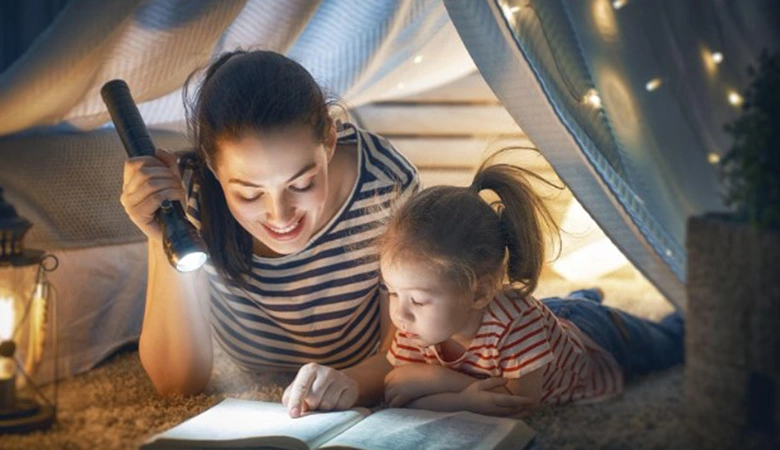Brain Boosters: Fun Ways to Keep Learning Alive This Summer
- Families
-
- UPDATED July 16, 2025

by Kristine Bowman
590 shares
When Disney’s “High School Musical” sang the song, “What Time Is It?” where the students and the teacher were counting down to the summer break, and when the clock struck, class was done, the students threw the papers in the area, and it was a celebration. Hey, it’s official summer break!
That means beaches, swimming, inviting friends over, lemonades, family bonding, and so much more. In other words, fun. However, isn’t it interesting that when you return to school from summer vacation, it feels as if your mind has become dull?
A story on Oxford and Cambridge Summer School pointed out that summer learning shouldn’t stop, as “learning helps reinforce knowledge, keeps students academically engaged, and prepares them for future challenges.”
Summer break often means a pause from the classroom routine, but that doesn’t mean learning has to stop. Whether your child is starting kindergarten or heading into middle school, there are plenty of ways to keep their minds active in a fun and engaging way.From hands-on projects to family outings with an educational twist, here’s how to help your child stay curious, sharp, and ready for school come fall.
10 Ways to Keep Learning Alive This Summer
Turn Reading Into an Adventure
Reading over the summer helps children maintain vocabulary and comprehension skills. Make it exciting by letting them choose their books or join a local library’s summer reading challenge. Create a cozy reading nook at home and take turns reading aloud, or listen to audiobooks together on road trips.
To keep things varied:
- Mix fiction with nonfiction (science books, biographies, and how-to guides).
- Pick stories set in places you’ll be visiting this summer.
- Encourage your child to write or draw about what they read.
Cook Together and Explore Math
Enjoying cooking while enjoying mathematics? Never better. Cooking is a fantastic way to sneak in math, science, and even reading. Measuring ingredients teaches fractions and volume, while reading a recipe reinforces sequencing and following directions. Let your child take the lead in planning meals or baking simple recipes.
Try the following:
- Doubling or halving recipes for fraction practice.
- Talking about how heat changes ingredients (science in action).
- Writing down new recipes to build a personal cookbook.
Turn Screen Time into Smart Time
Netflix during summer break is, of course, never bad. But not all screen time is created equal. There are many educational websites, apps, and YouTube channels designed for kids of all ages. Balance entertainment with enrichment by setting up daily or weekly screen time that includes educational components.
Look for:
- Coding games or logic puzzles.
- Virtual museum tours or science experiments.
- Language-learning apps for introducing a second language.
Always remember to keep a healthy mix of digital and non-digital activities.
Make Nature Your Classroom

The outdoors offers endless opportunities for hands-on learning. Whether you’re going on a hike, visiting a botanical garden, or just hanging out in your backyard, encourage observation and curiosity.
Ideas include:
- Starting a nature journal to draw or write about what they see.
- Identifying plants, bugs, or birds using an app or field guide.
- Building simple tools like a DIY sundial or mini greenhouse.
Bonus: Outdoor time also helps kids reset mentally and physically.
Use Travel to Teach
Don’t forget about school when you travel as a family. So, whether you’re planning a cross-country trip or a weekend getaway, travel presents built-in lessons. Before the trip, involve your kids in researching the destination, plotting routes, and calculating distances. While on the road, encourage storytelling or journaling about the experience.
Educational angles:
- Visit historical landmarks or museums.
- Learn about the local culture and language.
- Use maps and practice reading directions together.
Even short local trips can turn into meaningful learning moments.
Encourage Creative Projects
Kids love to build, make, and tinker. Creative projects develop problem-solving skills, patience, and self-expression. Stock a “maker box” at home with simple materials like cardboard, yarn, markers, tape, and recycled items for open-ended play.
Project ideas:
- Build a miniature city or design a board game.
- Make homemade slime or simple science experiments.
- Start a scrapbook about their summer adventures.
Allowing kids to explore their ideas with no “right” answer keeps learning fun and stress-free.
Build Routines with a Twist
Keeping a loose structure over the summer helps kids stay balanced while avoiding boredom. Without the rigid schedule of school, you can allow for more flexibility and fun, while still setting aside time for learning moments each day.
Try:
- A “brain boost” hour each morning with a new activity.
- Weekly themes like “Science Monday” or “Field Trip Friday.”
- Using a calendar or checklist so kids feel involved in planning.
The goal isn’t to replicate school, but to blend play with purpose.
Encourage Goal-Setting and Reflection
Teaching kids to set small, achievable goals over the summer builds motivation and confidence. These can be as simple as finishing a book series, learning a new skill, or saving up for a special treat.
Help them:
- Set one or two personal goals at the start of summer.
- Track their progress in a journal or chart.
- Reflect weekly on what they’ve enjoyed and learned.
This habit helps build a growth mindset they’ll carry into the school year.
Include School Uniforms in Your Summer Shopping
More families are shopping at malls more frequently during the summer break. But, sometimes, you could get caught up in the moment and spend all your budget on luxury buys without considering there are still school supplies to purchase while the return to school nears.
So, each time you shop, think of either window-shopping or really start buying those back-to-school uniform pants for girls or boys in preparation for their return to the academic world.
Follow these best practices:
- Shop early to take advantage of summer discounts and avoid stock issues.
- Choose breathable, durable fabrics to keep kids comfortable during warm months.
- Follow the school’s dress code carefully to prevent unnecessary returns or replacements.
Get Involved in the Community
Community engagement teaches responsibility, empathy, and real-world problem-solving. Look for kid-friendly volunteer opportunities or summer workshops.
Consider:
- Volunteering at animal shelters or local gardens.
- Participating in local library or museum programs.
- Attending free concerts, plays, or science days.
You can also organize a neighborhood book swap, lemonade stand, or trash pick-up day to spark creativity and responsibility at home.
Learning Shouldn’t Stop
If you altogether ditch the academic atmosphere during summer, you’ll regret it in the end. Summer is a time to relax, explore, and enjoy family. But it’s also the perfect season to help kids discover how learning can be entertaining and exciting. With a bit of creativity, parents can turn everyday activities into enriching experiences that keep young minds engaged, all while building memories along the way.
By the time that first day of school rolls around, they’ll be stepping into the classroom with curiosity, confidence, and momentum that will carry them through the year.